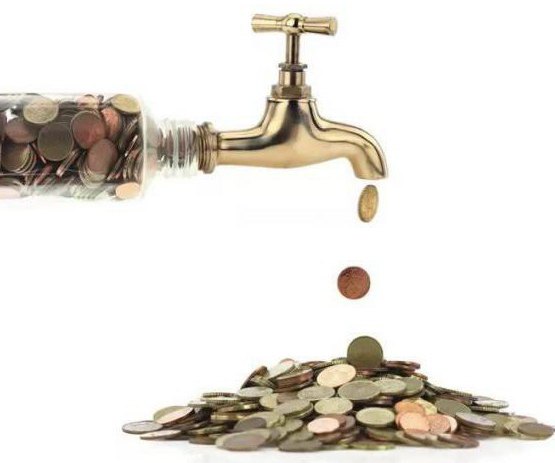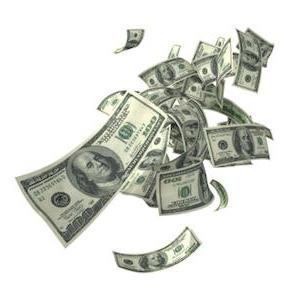The profit of the enterprise, which is reflected in the statements, should be an indicator of the effectiveness of its activities. In practice, it is associated with the finances that the company actually receives, only partially. The actual indicator characterizing the profitability of the organization can be identified in the statement of cash flows. 
Relevance of the issue
Net profit does not fully reflect the amount of money received realistically. Some articles in the reports are exclusively “paper”. For example, depreciation or revaluation of assets due to exchange rate differences. Such articles do not bring real income. Part of the profit is spent by the enterprise on maintaining current work and developing production (construction of workshops, purchase of equipment). In some cases, these costs may be higher than net income. In this regard, on paper the company may be profitable, but in fact suffer losses.
Finance movement
In practice, there are three types of flows:
- Operating. It shows the amount of funds received by the enterprise from the main activity.
- Investment. This flow characterizes the movement of funds that are aimed at maintaining and developing current work.
- Financial. It shows the movement of money transactions.
Net cash flow, free cash flow
There is a significant difference between these articles. When summarizing the operational, investment and financial indicators of the movement of funds, a net flow is obtained. In the financial statements it is reflected as a decrease / increase in the volume of assets and their equivalents. The net flow can be negative (indicated in parentheses) or positive. On it you can see how much the company earns or loses. Business analysis can be carried out in two ways. The first involves the assessment of the value of the enterprise as a whole, including its borrowed and equity. The second method takes into account only the means of internal sources of financing. In the first approach, free cash flows are discounted, which are generated by all reserves. The rate is the cost of raising capital. Finance generated by all (internal and external) sources forms the company's free cash flow (FCFF). In the second case, the value is not determined of the entire enterprise, but only of its own capital. For this purpose, FCFE discounted cash flow is discounted. It shows the amount of finance that remains after payment of profit from taxes, repayment of obligations, expenses for maintaining and improving operational activities. 
Free cash flow: calculation
FCFE is determined in several steps. It all starts with net profit. Its indicator is taken from the income statement. To the specified value add depreciation, wear and tear and depletion. Indicators can be taken from the report on the movement of finance. At its core, depreciation exists solely on paper, since no deductions are actually made. After that, capital investments are deducted. They represent the costs of servicing current work, the acquisition and modernization of equipment, the construction of new facilities and so on. The indicators are taken from the investment activity report.
Working capital
An entity may invest in short-term assets. In this regard, the change in the value of working capital is calculated. If it increases, free cash flows are reduced. working capital is defined as the difference between current assets and liabilities.In this case, non-monetary capital is used. That is, the size of current assets is adjusted by the indicator of finances and their equivalents. 
General formula
In addition to paying existing debts, the company attracts new sources of financing. This fact also affects free cash flows. In this regard, it is necessary to calculate the difference between deductions for old debts and the receipt of new loans. Indicators should be taken from the report on financial activities. Thus, the assessment of free cash flow on equity is carried out according to the formula:
- FCFE = Чп + А - Кз +/- change Ok - repayment of debts + loans, in which:
- Chp - net profit;
- A - depreciation;
- KZ - capital expenditures;
- Ok - working capital.
Alternative option
It should be said that depreciation is far from the only "paper" expense of the enterprise, which reduces profits. In this regard, another equation can be applied. The formula uses cash flow, which includes net income, adjustment for non-cash transactions (including depreciation), as well as a decrease / increase in working capital. The equation looks as follows:
- FCFE = PP from operating activities - KZ - repayment of debts + loans, in which:
- KZ - capital expenditures;
- Chp - a net stream of money.

FCFF
Free cash flows - assets that remain with the company after capital investments and taxes. In this case, the calculation of FCFF is carried out before deduction of deductions for debt and interest. The equation will be like this:
FCFF = Post Tax operating income + depreciation - cap. costs +/- changes in working capital.
There is a simpler formula:
FCFF = net operating flow - cap. expenses.
The considered values can have both positive and negative values. In the latter case, this occurs if the company suffers losses or costs are greater than the incoming profit. The considered free cash flows differ mainly in that FCFF is calculated after, and FCFE - before receiving / paying debts. 
Owner Profit
W. Buffett uses it as a cash flow. The calculation of the profit of the owner is as follows:
Чп + А and other non-monetary operations - KZ (average for the year), where:
- Chp - net profit;
- KZ - capital expenditures on fixed assets necessary to maintain long-term volumes and competition.
Moreover, if the company needs additional working capital, its increase is also included in capital investments. It is believed that the assessment of free cash flow on the owner’s profit is the most conservative method available. 
Conclusion
At its core, free cash flows are assets that can be withdrawn from a business completely painless for him, without fear that the company may lose its market position. These finances remain with the company after it has made all the necessary expenses. Analysis of free flows allows you to get a real idea of how much the company actually earns, how much money it has at its disposal for needs not related to its core business. The indicator can be both positive and negative. In the latter case, the company will spend more than it receives. This happens, for example, in cases where a large investment program is planned. Meanwhile, negative cash flow does not in all cases indicate a bad situation in the company. This is due to the fact that significant current costs in the current period can bring big profits in the future.








